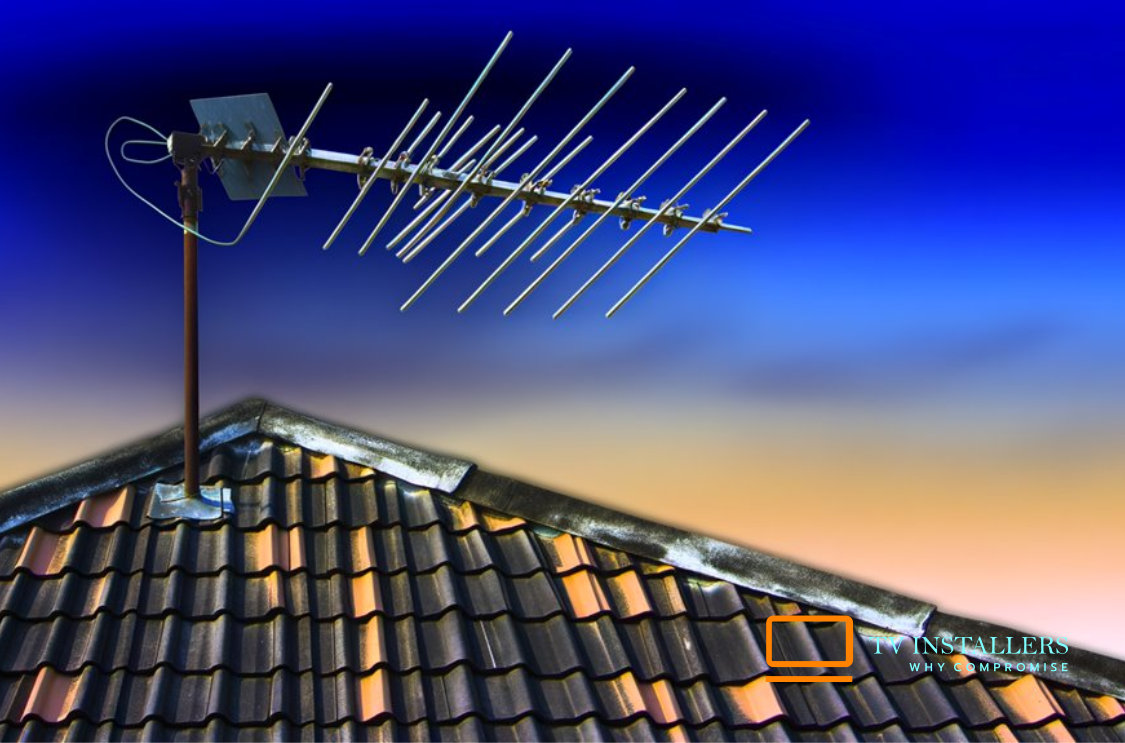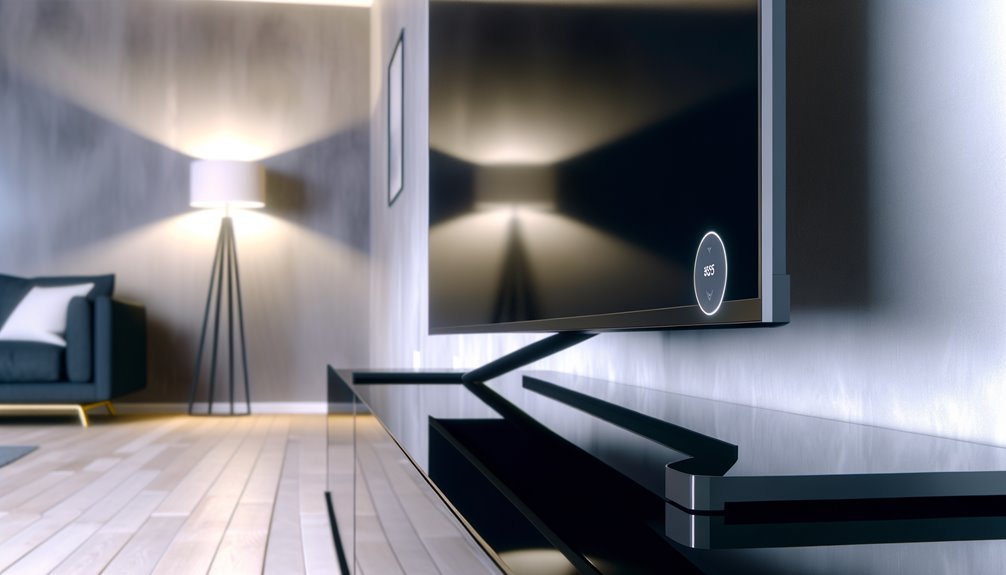Your TV aerial isn’t designed specifically for analogue or digital signals. The key factor is your TV’s internal tuner. Older aerials, installed pre-2007, likely supported analogue signals.
Post-2007 installations are generally digital-ready. To confirm, check your TV’s tuner settings by running an auto-tune or channel scan. Modern TVs with built-in digital tuners will display digital channels.
If your TV is older, you might need a Freeview digibox. For peak performance, make sure your aerial is properly aligned and structurally sound.
Explore further to enhance your understanding of aerial types and their signal compatibilities.
Key Information
- Post-2007 aerial installations are typically digital-ready.
- Digital aerials often use more robust materials and designs.
- Run an auto-tune or channel scan on your TV to check for digital signals.
- Look for enhanced signal clarity and reduced noise interference with digital aerials.
- Modern TVs with built-in digital tuners indicate compatibility with digital signals.
- For TV wall mounting + Bracket supply, simply click the “Book Now” button and follow the steps to secure your appointment.
Analogue Vs Digital Aerials
When comparing analogue and digital aerials, it’s important to understand that the aerial itself isn’t inherently designed for one specific type of signal; rather, it’s the TV tuner’s capability that determines whether you’ll receive analogue or digital broadcasts.
Most aerials can pick up both types of signals. However, the shift to digital TV has increased signal power since the analogue switch-off, enhancing overall reception quality.
The aerial’s quality and its installation location are critical factors affecting signal strength and clarity.
For best performance, make sure your aerial is properly aligned.
Understanding these distinctions and focusing on a high-quality aerial setup will maximise your TV viewing experience, regardless of whether the signal is analogue or digital.
Identifying Your Aerial Type
To identify your aerial type, first examine its physical characteristics and installation setup. Inspect the aerial’s structure; wideband aerials typically have multiple elements and a larger boom.
Check the orientation and alignment; a properly installed aerial will be directed at the nearest transmitter.
Assess the condition of the aerial and cabling; newer installations often feature more robust, weather-resistant materials.
Next, test signal reception. If your aerial consistently receives clear digital broadcasts post-changeover, it’s compatible with digital signals.
Note that an increase in signal power after the analogue switch-off is a good indicator.
Installation Date Clues
Determining the installation date of your aerial can provide significant clues about its ability to handle digital signals.
Aerials installed before 2007 were primarily designed for analogue signals, whereas those installed post-2007 are likely digital-ready.
Knowing this date can help you assess whether an upgrade is necessary for best digital signal reception. Here’s a quick reference table to guide you:
| Installation Period | Likely Signal Type | Upgrade Needed? |
|---|---|---|
| Before 2007 | Analogue | Yes |
| 2007 – 2010 | Phase of change | Possibly |
| 2010 – 2013 | Early Digital | Unlikely |
| 2013 – 2016 | Digital | No |
| After 2016 | Digital | No |
Verify the installation date for better signal compatibility insight.
Checking Signal Compatibility
Many modern TVs include built-in digital tuners, which can help you quickly confirm your aerial’s compatibility with digital signals.
First, access the TV’s menu and navigate to the tuner settings. If it lists options like DVB-T or Freeview, your TV has a digital tuner.
Next, connect your aerial to the TV and run an auto-tune or channel scan. If the scan detects digital channels, your aerial supports digital signals.
However, if you’ve got an older TV, you’ll need a Freeview digibox to interpret digital broadcasts.
Digital tuners are advantageous, offering features such as Electronic Program Guides (EPG) and improved reception, minimising interference from Wi-Fi and mobile phone masts.
Make sure your TV setup aligns with digital standards for the best performance.
Benefits of Digital Aerials
After ensuring your aerial’s digital compatibility, you’ll find that digital aerials offer superior signal clarity and reduced noise interference, thanks to their built-in filters and optimised designs.
These antennas, commonly known as digital aerials, feature advanced technology to enhance signal reception.
Full band and wide band antennas are specifically engineered to capture digital signals effectively.
The integrated filters in digital aerials mitigate the impact of extraneous noise, ensuring a robust and clear signal for digital TV.
Available in various designs and sizes, digital aerials cater to different geographical and architectural requirements, delivering consistent performance.
This optimised engineering guarantees that you receive high-quality television signals with minimal disruption, enhancing your overall viewing experience.
Upgrading Your TV Aerial
Upgrading your TV aerial to a wideband model can greatly enhance digital signal reception and overall performance.
Wideband aerials are designed to cover a broader range of digital frequencies, ensuring you capture the best possible signal.
While older analogue aerials might still work for digital signals, upgrading can notably boost performance.
Newer aerials often include built-in filters to minimise interference and enhance signal quality.
For best results, consult a professional installer to identify the most suitable aerial upgrade for your specific requirements.
| Feature | Benefit |
|---|---|
| Wideband Coverage | Better digital signal reception |
| Built-in Filters | Reduced interference |
| Enhanced Performance | Clearer picture and sound quality |
| Professional Consultation | Tailored solutions for your needs |
| Compatibility | Works with modern digital frequencies |
Frequently Asked Questions
How Do I Know if My TV Is Analogue or Digital?
Check your TV’s specifications for a built-in digital tuner. If absent, your TV is analogue. Alternatively, navigate the menu for digital channels or use a Freeview digibox to confirm digital signal reception capabilities.
Will My Old Aerial Work With Digital TV?
Test your old aerial with a digital TV tuner to verify compatibility. Confirm it’s in good condition and can pick up UHF frequencies. You might need adjustments or upgrades due to frequency range limitations or signal interference.
Do I Need to Upgrade My TV Aerial for Digital?
You might not need an upgrade, but a wideband aerial can enhance digital signal reception. Assess your signal strength and quality systematically; if you experience dropouts or poor picture, consider upgrading for best performance.
Will an Analogue Aerial Work With Freeview?
Yes, an analogue aerial can work with Freeview. Make sure your TV has a built-in digital tuner or use a Freeview digibox. Signal quality and location may affect reception, so verify signal strength before finalising setup.
Conclusion
To determine if your TV aerial is analogue or digital, review the installation date and check signal compatibility.
Analogue aerials often predate 2012, while digital aerials are designed for modern, high-definition broadcasts.
For precise identification, refer to your aerial’s technical specifications. Upgrading to a digital aerial enhances signal quality and future-proofs your setup.
Consult a professional installer to guarantee peak performance and seamless integration with your existing system.
For TV wall mounting + Bracket supply, simply click the “Book Now” button and follow the steps to secure your appointment.



